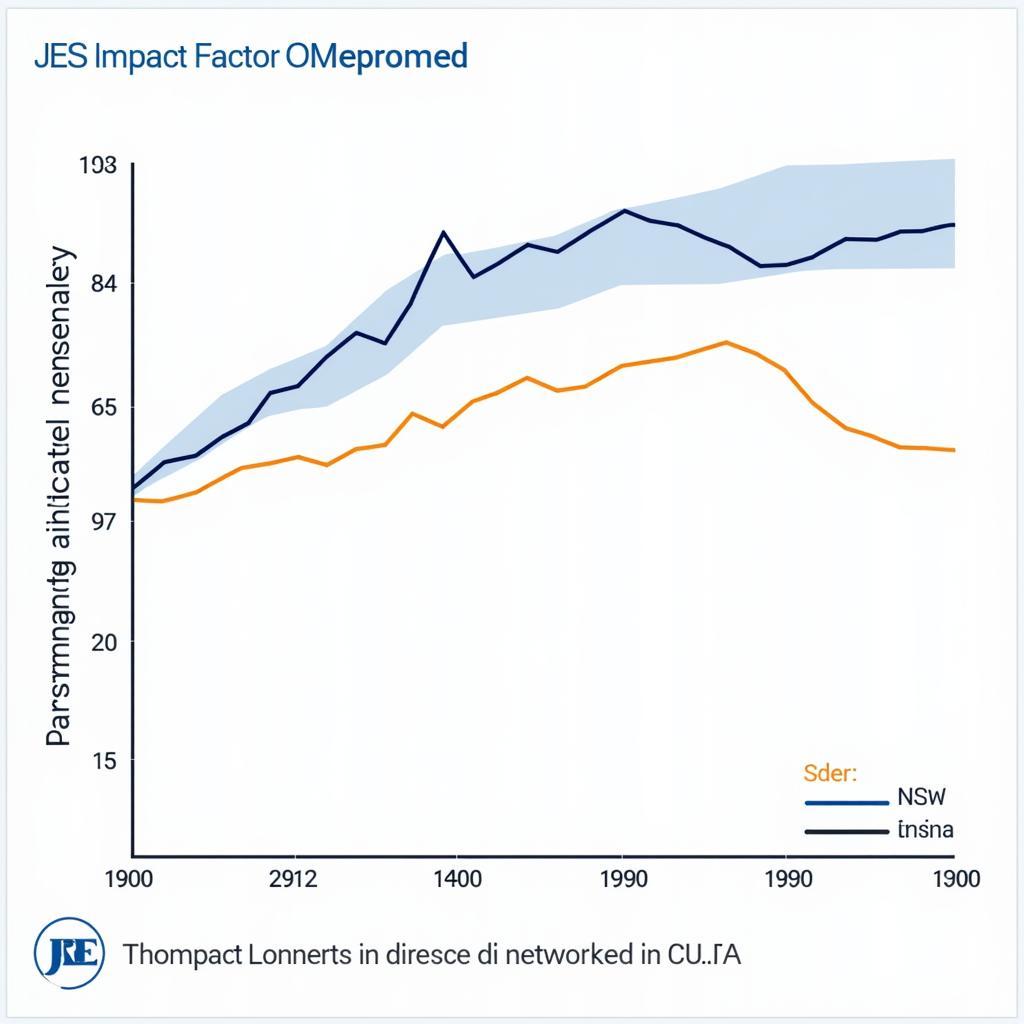The Journal of the Electrochemical Society (JES) impact factor is a key metric researchers consider when deciding where to publish their work. This guide will delve into the importance of the JES impact factor, its calculation, recent trends, and its significance for the electrochemical community. We’ll explore how this metric reflects the journal’s influence and offer insights into navigating the publication landscape.
Understanding the Journal of the Electrochemical Society Impact Factor
The impact factor serves as an indicator of a journal’s average citation frequency. It’s calculated by dividing the number of citations received in a specific year by articles published in the two preceding years. For example, the 2024 impact factor would consider citations received in 2024 for articles published in 2022 and 2023. Understanding this metric helps researchers gauge the potential visibility and influence of their work when published in JES. The Journal of the Electrochemical Society covers a broad range of topics, from batteries and fuel cells to corrosion and sensors, making it a central hub for researchers in various subfields of electrochemistry.
What does the impact factor really mean for researchers? Simply put, a higher impact factor often suggests greater visibility and potential influence within the scientific community.
Deciphering the Impact Factor Trends
Impact factor trends offer valuable insight into the evolving landscape of electrochemical research. Examining the JES impact factor over time can reveal shifts in research focus, emerging areas of interest, and the overall growth and influence of the field. While the impact factor is just one piece of the puzzle, its trajectory can help researchers understand the broader context of their work. Are certain areas of electrochemistry gaining more attention? Are there new technologies driving increased interest? By analyzing these trends, researchers can make more informed decisions about where to publish and how to position their contributions.
How can researchers use impact factor trends to their advantage? By staying abreast of these shifts, researchers can tailor their research and publication strategies to maximize impact and visibility.
 Graph depicting Journal of the Electrochemical Society impact factor trends over time
Graph depicting Journal of the Electrochemical Society impact factor trends over time
The Significance of JES in the Electrochemical Community
The Journal of the Electrochemical Society holds a prominent position in the global electrochemical community. Its long history and commitment to publishing high-quality research have established it as a vital platform for disseminating cutting-edge advancements. The journal’s impact factor reflects its influence and contribution to the field, showcasing the importance of the research published within its pages. Choosing to publish in JES provides researchers with an opportunity to contribute to this legacy and engage with a wide audience of fellow electrochemists.
Why is publishing in JES considered valuable for researchers? It offers a platform to contribute to the field’s progress and engage with a global network of experts.
“The JES impact factor represents the collective impact of the research community contributing to the journal,” says Dr. Elena Ramirez, a leading electrochemist at the University of California, Berkeley. “It’s a testament to the quality and relevance of the work being published.”
Impact Factor Considerations and Beyond
While the impact factor provides a helpful metric, it’s crucial to remember that it’s not the only measure of a publication’s value. Researchers should consider other factors, such as the journal’s scope, readership, and reputation within the specific subfield. The overall goal is to ensure the research reaches the intended audience and contributes meaningfully to the advancement of knowledge. Focusing solely on the impact factor can be limiting; a holistic approach to publication strategy is always recommended.
What other factors should researchers consider alongside the impact factor? Relevance to target audience, journal reputation, and overall contribution to the field are all crucial considerations.
Conclusion: The Journal of the Electrochemical Society Impact Factor and Your Research
The Journal Of The Electrochemical Society Impact Factor provides a valuable benchmark for assessing the journal’s influence and the potential reach of published research. By understanding the impact factor, its trends, and its significance within the electrochemical community, researchers can make informed decisions about their publication strategies. While the impact factor is an important metric, it should be considered alongside other factors to ensure the research achieves maximum impact and contributes meaningfully to the field. The JES impact factor remains a crucial element in navigating the landscape of electrochemical publishing.
FAQ
- What is the current Journal of the Electrochemical Society impact factor? (This fluctuates yearly; provide general guidance on where to find this information).
- How is the impact factor calculated?
- Why is the impact factor important for researchers?
- What other factors should I consider when choosing a journal to publish in?
- How can I improve my chances of publishing in a high-impact journal?
- Does the Journal of the Electrochemical Society have open access options?
- What are the typical publication timelines for the Journal of the Electrochemical Society?
“Choosing the right publication venue is a strategic decision,” adds Professor David Chen, a renowned materials scientist at MIT. “Consider the specific aims of your research and the audience you want to reach.”
Other related resources on our website:
- Guide to publishing in scientific journals
- Understanding open access publishing
- Tips for writing a strong research paper
Need support? Contact us at Phone: 02043854663, Email: [email protected] or visit us at Zone 34, Bac Giang, 260000, Vietnam. We offer 24/7 customer support.